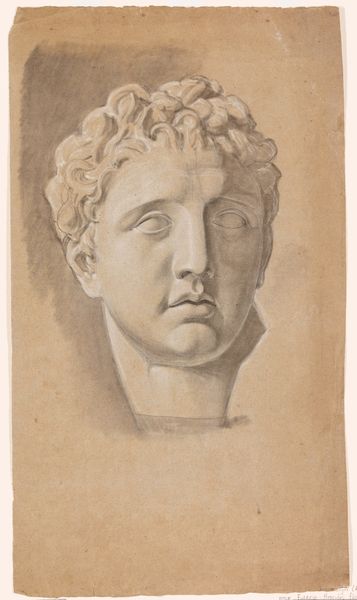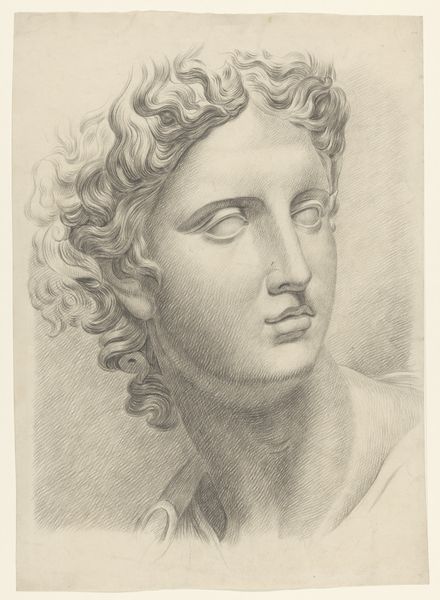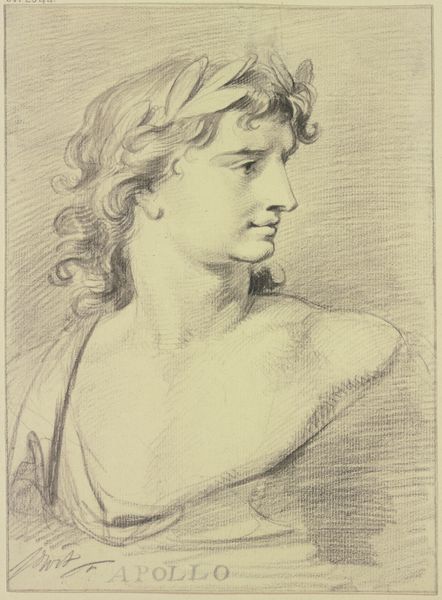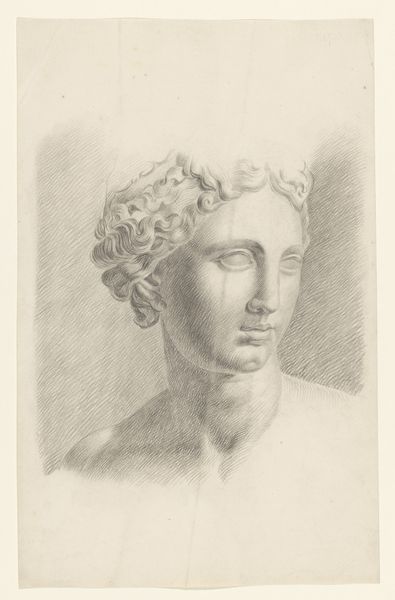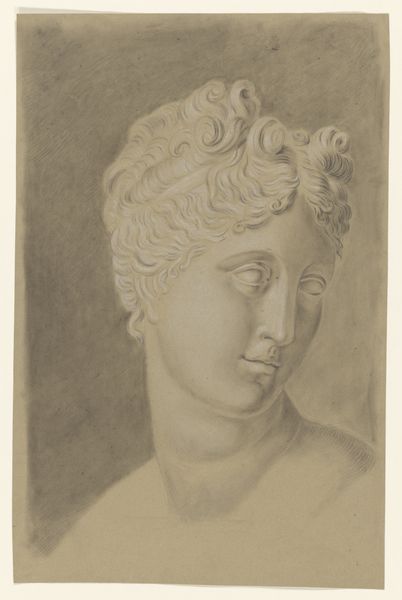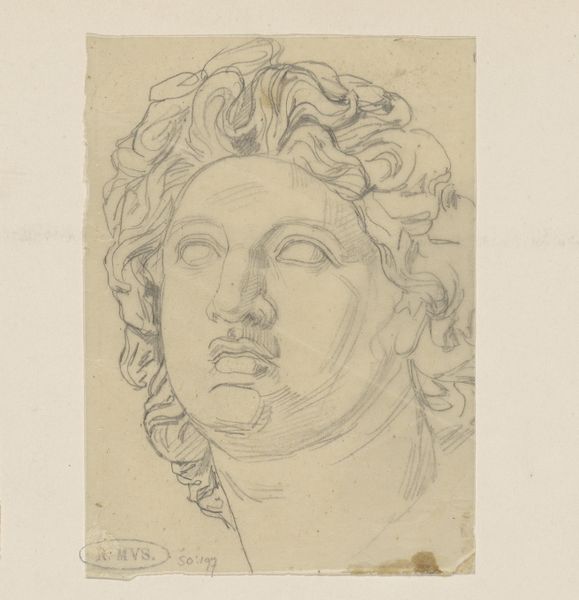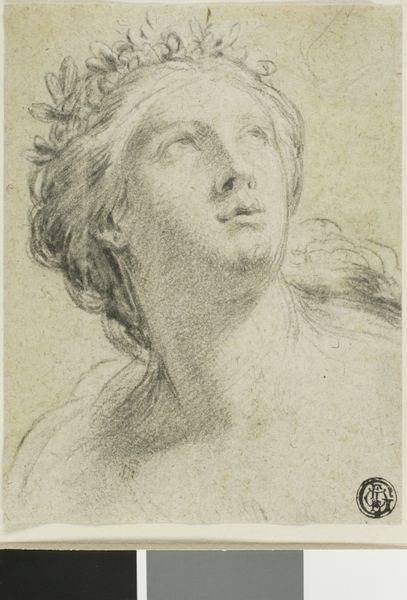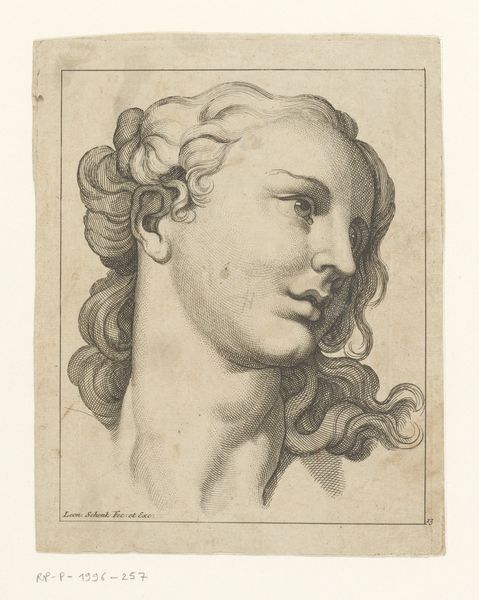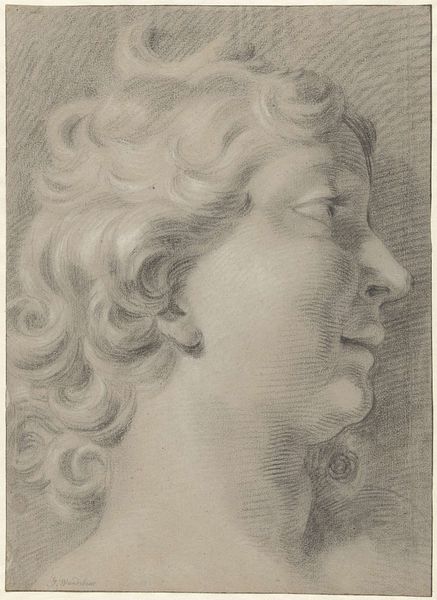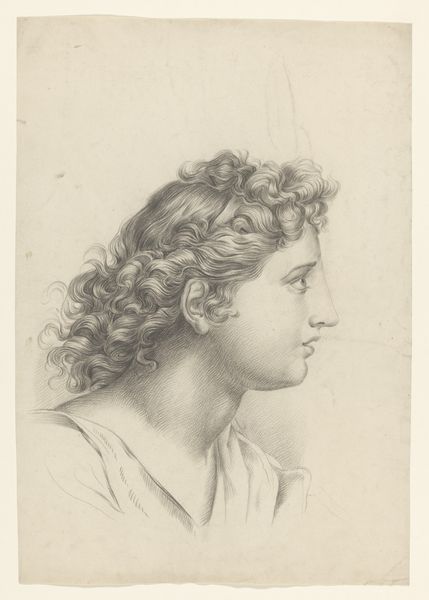
drawing, pencil
#
portrait
#
drawing
#
facial expression drawing
#
pencil sketch
#
figuration
#
portrait reference
#
pencil drawing
#
romanticism
#
pencil
#
animal drawing portrait
#
portrait drawing
#
facial portrait
#
academic-art
#
portrait art
#
fine art portrait
#
digital portrait
Dimensions: 292 mm (height) x 219 mm (width) (bladmaal)
Curator: This drawing, "Studie af kvindehoved, drejet 3/4 mod højre," or "Study of a Woman's Head, Turned 3/4 to the Right," by Martinus Rørbye, made with pencil around 1820. Editor: Oh, it's captivating! There is a certain… tension to her gaze, a kind of perplexed defiance perhaps? What do you sense in it? Curator: I see that too, in the raised eyebrow and almost wary expression. The interesting thing is how Rørbye, an artist deeply entrenched in Romanticism, uses such precise academic lines to convey this almost… human, relatable emotion. Editor: It is a moment of raw feeling framed within the constraints of traditional artistic training. Consider that around this time there was great turbulence. Who was afforded freedom, agency, visibility, and why? Whose emotions and bodies mattered? Curator: It’s interesting to think about those social questions in the context of Rørbye's career. He sought out diverse cultural encounters on his travels through Europe. His art, like this work, becomes a document, perhaps unintentionally, of cultural dynamics, privilege, and even the artist's evolving understanding of his own place within that. Editor: The piece sits in dialogue with ideas around representation, access and class, doesn’t it? Consider, for example, the work of women artists at the time, the subjects available to them, how and where their work was, or wasn’t, exhibited. The limitations of representation and opportunities for self-expression within those bounds... Curator: Yes! And perhaps Rørbye is using the pencil medium and academic framework to investigate an openness about representation and feeling, which, at this moment in time, suggests a more liminal experience and way of encountering the other. Editor: Right. It brings to mind the idea of the artwork itself becoming a space for encountering and questioning. Curator: A quiet invitation, perhaps. Even the paper seems to echo that, fading towards an almost ethereal softness at the edges, almost like it’s not fully present with us. Editor: It's a drawing that leaves me pondering the narratives just beyond its surface. Thank you for sharing your insights! Curator: The pleasure's all mine. There is so much packed in it, isn't there? It invites so much careful consideration.
Comments
No comments
Be the first to comment and join the conversation on the ultimate creative platform.
